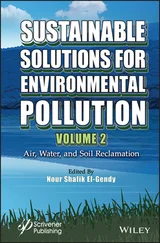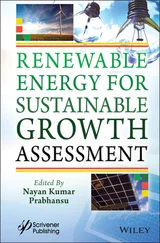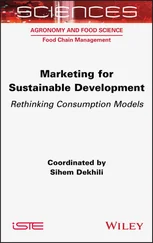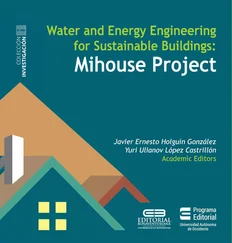72 72 Amutha, R. and Gunasekaran, P. (2001). Production of ethanol from liquefied cassava starch using co‐immobilized cells of Zymomonas mobilis and Saccharomyces diastaticus. J. Biosci. Bioeng. 92 (6): 560–564.
73 73 Rebroš, M., Rosenberg, M., Grosová, Z. et al. (2009). Ethanol production from starch hydrolyzates using Zymomonas mobilis and glucoamylase entrapped in polyvinylalcohol hydrogel. Appl. Biochem. Biotechnol. 158 (3): 561–570.
74 74 Saikia, R.R., Deka, S., Deka, M., and Sarma, H. (2012). Optimization of environmental factors for improved production of rhamnolipid biosurfactant by Pseudomonas aeruginosa RS29 on glycerol. J. Basic Microbiol. 52 (4): 446–457.
75 75 Santos, D.K., Rufino, R.D., Luna, J.M. et al. (2016). Biosurfactants: multifunctional biomolecules of the 21st century. Int. J. Mol. Sci. 17 (3): 401. https://doi.org/10.3390/ijms17030401.
76 76 Noah, K.S., Bruhn, D.F., and Bala, G.A. (2005). Surfactin production from potato process effluent by Bacillus subtilis in a chemostat. Appl. Biochem. Biotechnol. 121–124: 465–473.
77 77 Kiran, G.S., Sabu, A., and Selvin, J. (2010). Synthesis of silver nanoparticles by glycolipid biosurfactant produced from marine Brevibacterium casei MSA19. J. Biotechnol. 148 (4): 221–225.
78 78 Samad, A., Zhang, J., Chen, D., and Liang, Y. (2015). Sophorolipid production from biomass hydrolysates. Appl. Biochem. Biotechnol. 175: 2246–2257.
79 79 Adamberg, K., Kask, S., Laht, T.M., and Paalme, T. (2003). The effect of temperature and pH on the growth of lactic acid bacteria: a pH‐auxostat study. Int. J. Food Microbiol. 85 (1–2): 171–183.
80 80 Klok, A.J., Verbaanderd, J.A., Lamers, P.P. et al. (2013). A model for customising biomass composition in continuous microalgae production. Bioresour. Technol. 146: 89–100.
81 81 Kebbouche‐Gana, S., Gana, M.L., Ferrioune, I. et al. (2013). Production of biosurfactant on crude date syrup under saline conditions by entrapped cells of Natrialba sp. strain E21, an extremely halophilic bacterium isolated from a solar saltern (Ain Salah, Algeria). Extremophiles 17: 981–993.
82 82 Vanavil, B., Perumalsamy, M., and Rao, A.S. (2013). Biosurfactant production from novel air isolate NITT6L: screening, characterization and optimization of media. J. Microbiol. Biotechnol. 23: 1229–1243.
83 83 Behrens, B., Helmer, P.O., Tiso, T. et al. (2016). Rhamnolipid biosurfactant analysis using online turbulent flow chromatography‐liquid chromatography‐tandem mass spectrometry. J. Chromatogr. A 1465: 90–97.
84 84 Zhang, Q., Li, Y., and Xia, L. (2014). An oleaginous endophyte Bacillus subtilis HB1310 isolated from thin‐shelled walnut and its utilization of cotton stalk hydrolysate for lipid production. Biotechnol. Biofuels 7 (1): 152.
85 85 Probert, H.M. and Gibson, G.R. (2002). Investigating the prebiotic and gas‐generating effects of selected carbohydrates on the human colonic microflora. Lett. Appl. Microbiol. 35 (6): 473–480.
86 86 Rodriguez‐Contreras, A., Koller, M., de Sousa Dias, M.M. et al. (2013). Novel poly [(R)‐3‐hydroxybutyrate]‐producing bacterium isolated from a Bolivian hypersaline lake. Food Technol. Biotechnol. 51 (1): 123–130.
87 87 Sarilmiser, H.K., Ates, O., Ozdemir, G. et al. (2015). Effective stimulating factors for microbial levan production by Halomonas smyrnensis AAD6T. J. Biosci. Bioeng. 119 (4): 455–463.
88 88 Xu, N., Liu, S., Xu, L. et al. (2020). Enhanced rhamnolipids production using a novel bioreactor system based on integrated foam‐control and repeated fed‐batch fermentation strategy. Biotechnol. Biofuels 13: 1–10.
89 89 Yao, S., Zhao, S., Lu, Z. et al. (2015). Control of agitation and aeration rates in the production of surfactin in foam overflowing fed‐batch culture with industrial fermentation. Rev. Argent. Microbiol. 47: 344–349.
90 90 Zhu, Y., Gan, J.J., Zhang, G.L. et al. (2007). Reuse of waste frying oil for production of rhamnolipids using Pseudomonas aeruginosa zju. u1M. J. Zhejiang Univ. Sci. A 8 (9): 1514–1520.
91 91 Aguilera‐Segura, S.M., Vélez, V.N., Achenie, L. et al. (2016). Peptides design based on transmembrane Escherichia coli's OmpA protein through molecular dynamics simulations in water–dodecane interfaces. J. Mol. Graph. Model. 68: 216–223.
92 92 Bhardwaj, G., Cameotra, S.S., and Chopra, H.K. (2013). Utilization of oleo‐chemical industry by‐products for biosurfactant production. AMB Express 3 (1): 68.
93 93 Banat, I.M., Satpute, S.K., Cameotra, S.S. et al. (2014). Cost effective technologies and renewable substrates for biosurfactants' production. Front. Microbiol. 5: 697.
94 94 Thavasi, R., Jayalakshmi, S., Balasubramanian, T., and Banat, I.M. (2008). Production and characterization of a glycolipid biosurfactant from Bacillus megaterium using economically cheaper sources. World J. Microbiol. Biotechnol. 24 (7): 917–925.
95 95 Mercade, M.E., Manresa, M.A., Robert, M. et al. (1993). Olive oil mill effluent (OOME). New substrate for biosurfactant production. Bioresour. Technol. 43 (1): 1–6.
96 96 Abalos, A., Pinazo, A., Infante, M.R. et al. (2001). Physicochemical and antimicrobial properties of new rhamnolipids produced by Pseudomonas aeruginosa AT10 from soybean oil refinery wastes. Langmuir 17 (5): 1367–1371.
97 97 Benincasa, M., Abalos, A., Oliveira, I., and Manresa, A. (2004). Chemical structure, surface properties and biological activities of the biosurfactant produced by Pseudomonas aeruginosa LBI from soapstock. Antonie Van Leeuwenhoek 85: 1–8.
98 98 De Faria, A.F., Teodoro‐Martinez, D.S., De Oliveira Barbosa, G.N. et al. (2011). Production and structural characterization of surfactin (C14/Leu7) produced by Bacillus subtilis isolate LSFM‐05 grown on raw glycerol from the biodiesel industry. Process Biochem. 46: 1951–1957.
99 99 George, S. and Jayachandran, K. (2013). Production and characterization of rhamnolipid biosurfactant from waste frying coconut oil using a novel Pseudomonas aeruginosa D. J. Appl. Microbiol. 114: 373–383.
100 100 Moya Ramírez, I., Altmajer Vaz, D., Banat, I.M. et al. (2016). Hydrolysis of olive mill waste to enhance rhamnolipids and surfactin production. Bioresour. Technol. 205: 1–6.
101 101 Bednarski, W., Adamczak, M., Tomasik, J., and Płaszczyk, M. (2004). Application of oil refinery waste in the biosynthesis of glycolipids by yeast. Bioresour. Technol. 95 (1): 15–18.
102 102 Nitschke, M., Costa, S.G., and Contiero, J. (2005). Rhamnolipid surfactants: an update on the general aspects of these remarkable biomolecules. Biotechnol. Prog. 21: 1593–1600.
103 103 Rufino, R.D., Sarubbo, L.A., Neto, B.B., and Campos‐Takaki, G.M. (2008). Experimental design for the production of tensio‐active agent by Candida lipolytica. J. Ind. Microbiol. Biotechnol. 35: 907–914.
104 104 Jang, J.Y., Yang, S.Y., Kim, Y.C. et al. (2013). Identification of orfamide A as an insecticidal metabolite produced by Pseudomonas protegens F6. J. Agric. Food Chem. 61: 6786–6791.
105 105 Menon, V., Prakash, G., Prabhune, A., and Rao, M. (2010). Biocatalytic approach for the utilization of hemicellulose for ethanol production from agricultural residue using thermostable xylanase and thermotolerant yeast. Bioresour. Technol. 101: 5366–5373.
106 106 Di Martino, C., Catone, M.V., Lopez, N.I., and Raiger Iustman, L.J. (2014). Polyhydroxyalkanoate synthesis affects biosurfactant production and cell attachment to hydrocarbons in Pseudomonas sp. KA‐08. Curr. Microbiol. 68: 735–742.
107 107 Marmesat, S., Rodrigues, E., Velasco, J., and Dobarganes, C. (2007). Quality of used frying fats and oils: comparison of rapid tests based on chemical and physical oil properties. Int. J. Food Sci. Technol. 42 (5): 601–608.
108 108 Haba, E., Espuny, M.J., Busquets, M., and Manresa, A. (2000). Screening and production of rhamnolipids by Pseudomonas aeruginosa 47T2 NCIB 40044 from waste frying oils. J. Appl. Microbiol. 88: 379–387.
Читать дальше












